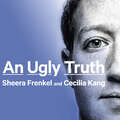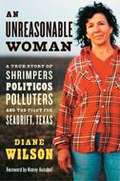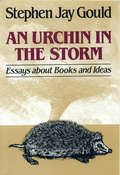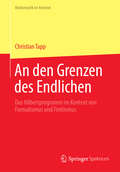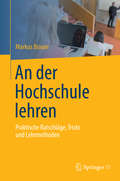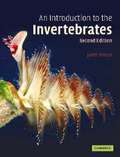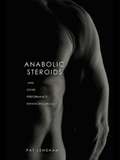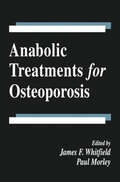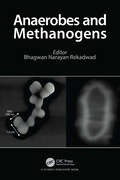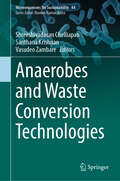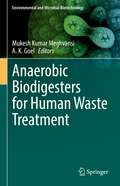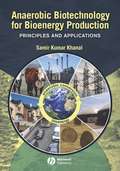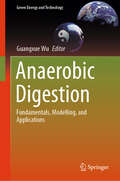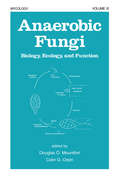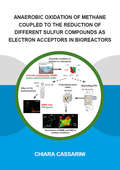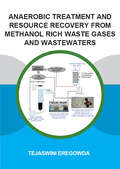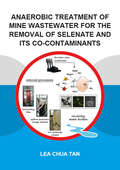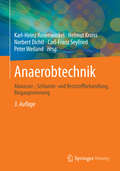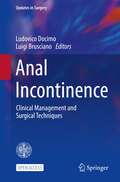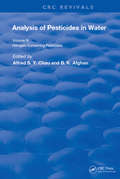- Table View
- List View
An Ugly Truth: Inside Facebook's Battle for Domination (Language Acts and Worldmaking #29)
by Sheera Frenkel Cecilia Kang'The ultimate takedown' New York Times'The problem of Facebook is Zuckerberg. And the question posed by this splendid book is: what are we going to do about him?' Observer'A comprehensive account . . . drawn from first-hand testimonies. Thoroughly engaging' The Times'What marks this book out is how it gets under the corporate bonnet . . . to build a picture of astounding corporate arrogance and irresponsibility' Sunday Times'An explosive new book' Daily Mail__________________________________________Award-winning New York Times reporters Sheera Frenkel and Cecilia Kang unveil the tech story of our times in a riveting, behind-the-scenes exposé that offers the definitive account of Facebook's fall from grace. Once one of Silicon Valley's greatest success stories, for the past five years, Facebook has been under constant fire, roiled by controversies and crises. It turns out that while the tech giant was connecting the world, they were also mishandling users' data, allowing the spread of fake news, and the amplification of dangerous, polarising hate speech. Critics framed the narrative as the irreconcilable conflict between the platform's lofty mission to advance society by bringing people together while also profiting off of them. The company, many said, had simply lost its way. But the truth is far more complex. Drawing on their unrivalled sources, Frenkel and Kang take readers inside the complex court politics, alliances and rivalries within the company, its growing political influence as well as its skirmishes with privacy groups and the FTC, to shine a light on the fatal cracks in the architecture of the tech behemoth. Their explosive, exclusive reporting led them to a shocking conclusion: The missteps of the last five years were not an anomaly but an inevitability - this is how the platform was built to perform. In a period of great upheaval, growth has remained the one constant under the leadership of Mark Zuckerberg and Sheryl Sandberg. Each has stood by as their technology is co-opted by hate-mongers, criminals and corrupt political regimes across the globe, with devastating consequences. In An Ugly Truth, they are at last held accountable.
An Unlikely Vineyard
by Alice Feiring Deirdre HeekinAn Unlikely Vineyard tells the evolutionary story of Deirdre Heekin's farm from overgrown fields to a fertile, productive, and beautiful landscape that melds with its natural environment. Is it possible to capture landscape in a bottle? To express its terroir, its essence of place--geology, geography, climate, and soil--as well as the skill of the winegrower? That's what Heekin and her chef/husband, Caleb Barber, set out to accomplish on their tiny, eight-acre hillside farm and vineyard in Vermont. But An Unlikely Vineyard involves much more. It also presents, through the example of their farming journey and winegrowing endeavors, an impressive amount of information on how to think about almost every aspect of gardening: from composting to trellising; from cider and perry making to growing old garden roses, keeping bees, and raising livestock; from pruning (or not) to dealing naturally with pests and diseases. Challenged by cold winters, wet summers, and other factors, Deirdre and Caleb set about to grow not only a vineyard, but an orchard of heirloom apples, pears, and plums, as well as gardens filled with vegetables, herbs, roses, and wildflowers destined for their own table and for the kitchen of their small restaurant. They wanted to create, or rediscover, a sense of place, and to grow food naturally using the philosophy and techniques gleaned from organic gardening, permaculture, and biodynamic farming. Accompanied throughout by lush photos, this gentle narrative will appeal to anyone who loves food, farms, and living well.
An Unnatural Metropolis: Wresting New Orleans from Nature
by Craig E. ColtenStrategically situated at the gateway to the Mississippi River yet standing atop a former swamp, New Orleans was from the first what geographer Peirce Lewis called an "impossible but inevitable city." How New Orleans came to be, taking shape between the mutual and often contradictory forces of nature and urban development, is the subject of An Unnatural Metropolis. Craig E. Colten traces engineered modifications to New Orleans's natural environment from 1800 to 2000 and demonstrates that, though all cities must contend with their physical settings, New Orleans may be the city most dependent on human-induced transformations of its precarious site. In a new preface, Colten shows how Hurricane Katrina exemplifies the inability of human artifice to exclude nature from cities and he urges city planners to keep the environment in mind as they contemplate New Orleans's future. Urban geographers frequently have portrayed cities as the antithesis of nature, but in An Unnatural Metropolis, Colten introduces a critical environmental perspective to the history of urban areas. His amply illustrated work offers an in-depth look at a city and society uniquely shaped by the natural forces it has sought to harness.
An Unreasonable Woman: A True Story of Shrimpers, Políticos, Polluters, and the Fight for Seadrift, Texas
by Diane WilsonFor her activism on behalf of Texas Gulf Coast bays, Wilson has been recognized with awards including Mother Jones' Hellraiser of the Month. In her first book, this fourth-generation shrimper relates her battles against a plastics company (and their political allies) whose dumping of toxic chemicals resulted in her county's designation as the nation's most polluted in the late 1980s. Annotation ©2005 Book News, Inc., Portland, OR (booknews.com)
An Urchin in the Storm: Essays about Books and Ideas
by Stephen Jay Gould"What pleasure to see the dishonest, the inept, and the misguided deftly given their due, while praise is lavished on the deserving--for reasons well and truly stated."--Kirkus Reviews<P><P> Ranging as far as the fox and as deep as the hedgehog (the urchin of his title), Stephen Jay Gould expands on geology, biological determinism, "cardboard Darwinism," and evolutionary theory in this sparkling collection.
An den Grenzen des Endlichen: Das Hilbertprogramm im Kontext von Formalismus und Finitismus (Mathematik im Kontext)
by Christian TappDer Mathematiker David Hilbert entwickelte mit seiner Beweistheorie ein Programm zur Grundlegung der Mathematik. In der ersten deutschsprachigen Monographie zum Thema bietet der Autor neue Deutungen des Hilbertprogramms. Ausgehend von den historischen Quellen stellt er die Frage neu, ob Hilbert eine formalistische Philosophie der Mathematik voraussetzte. Er macht die Fülle der Ideen sichtbar, die Hilbert und seine Schüler formulierten, diskutiert anspruchsvolle philosophische Implikationen und räumt mit einer Reihe von Fehlinterpretationen auf.
An der Hochschule lehren: Praktische Ratschläge, Tricks und Lehrmethoden
by Markus BrauerWenn es Ihnen wie den meisten Ihrer Kollegen geht, erhalten Sie als Dozent oder Doktorand keine Grundausbildung in Didaktik und Pädagogik für Ihre Hochschullehre. Es scheint als ob die Fähigkeit, Studierende zu unterrichten und sie in ihrem Lernen zu fördern, eine Selbstverständlichkeit wäre. Das ist natürlich falsch, und das Ziel dieses Buch ist es, diese Lücke zu füllen und Sie in Ihrer Lehre zu unterstützen.Forschungen über die Aufmerksamkeit, das Gedächtnis und die Motivation haben es ermöglicht, Lehrmethoden zu entwickeln, die das Verstehen und Lernen der Studierenden maximieren. Diese Lehrmethoden integrieren unter anderem das "aktive Lernen", das sich durch eine aktive Teilnahme der Studierenden am Lernprozess auszeichnet.Pragmatisch und praktisch werden in diesem Buch die didaktischen Methoden vorgestellt, die "funktionieren". Sie erfahren, wie Sie diese in großen Veranstaltungen (Vorlesungen) und kleinen Veranstaltungen (Seminare, Übungen) anwenden können. Dieses Buch enthält viele praktische und konkrete Hinweise für die Lehre, behandelt aber auch andere für Sie wichtige Themen wie Prüfungen, das "Schwätzen", die Motivation der Studierenden, und Zeitmanagement.Wenn Sie Lehrender an Universitäten oder Fachhochschulen sind, dann ist dieses Buch unentbehrlich für Sie. Aber auch jene, die in der Erwachsenenbildung tätig sind, werden die vielen pädagogischen Hinweise nützlich finden. Nach dem Lesen dieses Buches werden Sie nicht nur besser unterrichten, Sie werden auch mehr Spaß an Ihrem Beruf haben.
An introduction to the invertebrates, Second Edition
by Janet MooreThis book is an introductory guide to invertebrate evolution for university students and others. It is designed to be read as a whole to interest and orientate students who encounter invertebrates. The text is illustrated throughout by specially prepared figures, many of them new for this edition.
Anabolic Steroids: And Other Performance-enhancing Drugs
by Patrick LenehanAnabolic steroids have traditionally been controversial in the sporting arena. Today, research indicates a dramatic increase in the use of anabolic steroids and other performance-enhancing drugs outside of competitive sports. With evidence of widespread steroid abuse among the general population, health professionals are citing the emergence of an
Anabolic Treatments for Osteoporosis (Handbooks in Pharmacology and Toxicology)
by Paul Morley James F. WhitfieldOsteoporosis, a growing epidemic among women in North America, Europe, and Japan, is a painful, costly disease that has presented a treatment challenge to healthcare professionals. Until recently, therapies have focused on agents that slow bone resorption, and have had only limited success at increasing bone mass.
Anaerobes and Methanogens
by Bhagwan Narayan RekadwadThe book presents the complex realm of anaerobes and methanogens, which are microorganisms specialized in surviving in environments with very little or no oxygen. Anaerobes and methanogens play a vital role in many ecosystems ranging from the deep oceans to the human gut. The book describes the processes neighboring anaerobes and methanogens undergo to survive in environments, low to no oxygen, through their metabolic processes, genetic capabilities, and physiology. The book elaborates on the role of anaerobes in biogeochemical cycles, human health, and industrial processes. If it is biogas production or degradation of organic matter, anaerobic and methanogenic microorganisms play an important role in the ecosystem within our planet. The book shows a valuable perspective on anaerobes and methanogens and their important role in environments that are vital for life on Earth.
Anaerobes and Waste Conversion Technologies (Microorganisms for Sustainability #44)
by Vasudeo Zambare Shreeshivadasan Chelliapan Santhana KrishnanThis book covers all aspects of anaerobic waste conversion technologies using anaerobes, particularly in anaerobic digestion and fermentation processes. It provides the latest advances in waste-to-energy techniques for converting solid and liquid wastes to valuable fuel and energy. It goes beyond traditional municipal waste, including energy recovery from various industrial wastewater and biomass. Topics include biomass pretreatment, metabolic pathways, anaerobic reactor design, product recovery, and conversion technology applications. Essential information is provided, and individual chapters are dedicated to each topic. The book assists academicians, postgraduate students, biochemical engineers, environmental engineers, analysts, chemical engineers, and industrial entrepreneurs in acquiring the skills needed for real-time implementation of anaerobic digestion technologies.
Anaerobes in Biotechnology (Advances in Biochemical Engineering/Biotechnology #156)
by Rajni Hatti-Kaul Bo Mattiasson Gashaw MamoThis book review series presents current trends in modern biotechnology. The aim is to cover all aspects of this interdisciplinary technology where knowledge, methods and expertise are required from chemistry, biochemistry, microbiology, genetics, chemical engineering and computer science. Volumes are organized topically and provide a comprehensive discussion of developments in the respective field over the past 3-5 years. The series also discusses new discoveries and applications. Special volumes are dedicated to selected topics which focus on new biotechnological products and new processes for their synthesis and purification. In general, special volumes are edited by well-known guest editors. The series editor and publisher will however always be pleased to receive suggestions and supplementary information. Manuscripts are accepted in English.
Anaerobic Biodigesters for Human Waste Treatment (Environmental and Microbial Biotechnology)
by Mukesh Kumar Meghvansi A. K. GoelThe edited book brings out a comprehensive synthesis of latest scientific literature covering various important aspects of anaerobic biodigesters for human waste management that ranges from latest understanding on fundamental concepts/mechanisms of anaerobic biodigestion, modern tools and techniques used in process evaluation, current strategies being recruited for the performance enhancement, and case studies/ success stories across the world on applications of biodigesters used in human waste treatment. The anaerobic biodigestion is a process of break-down of organic waste by anaerobic microorganisms in absence of the oxygen. This process has been conventionally used for treating various types of organic waste including sewage sludge. After optimizing various process parameters, researchers have developed anaerobic biodigesters that have been successfully used for human waste (nigh soil) treatment. The topic of human waste treatment assumes global significance in the wake of UN sustainable Development Goals (SDG) wherein SDG-6 specifically highlights the Sanitation for all by 2030. The anaerobic Biodigester technology has the potential to manage the human waste as well and can contribute immensely in achieving targets of UN-SDG-6. This book is of interest to researchers, academicians, scientists, policy officials and capacity builders. Also the book serves as additional reading material for undergraduate and graduate students of environmental Biotechnology. National and international biotechnologists, environmental engineers and sanitation experts also find this to be a useful read.
Anaerobic Biotechnology for Bioenergy Production: Principles and Applications
by Samir Kumar KhanalAnaerobic biotechnology is a cost-effective and sustainable means of treating waste and wastewaters that couples treatment processes with the reclamation of useful by-products and renewable biofuels. This means of treating municipal, agricultural, and industrial wastes allows waste products to be converted to value-added products such as biofuels, biofertilizers, and other chemicals. Anaerobic Biotechnology for Bioenergy Production: Principles and Applications provides the reader with basic principles of anaerobic processes alongside practical uses of anaerobic biotechnology options. This book will be a valuable reference to any professional currently considering or working with anaerobic biotechnology options.
Anaerobic Digestion: Fundamentals, Modelling, and Applications (Green Energy and Technology)
by Guangxue WuAnaerobic digestion is a core technology for sustainable waste(water) management and renewable energy recovery from waste sources. This book introduces and brings readers up to date with anaerobic digestion and its applications. It refreshes readers on the fundamentals of anaerobic digestion processes for normal and stressed scenarios, introduces techniques for stable system operation and predication, and explains the innovation in technology applications for waste valorization. By providing scientific and engineering fundamentals, the book equips professionals with the knowledge of knowing why and how to solve the problems in the application of anaerobic digestion.
Anaerobic Fungi: Biology: Ecology, and Function
by Douglas MountfortUniting-for the first time-current information on anaerobic fungi from a number of different disciplines, this unique reference examines the taxonomy, physiology, biochemistry, molecular biology, and ecology of anaerobic fungi-focusing on fungi from the rumen and other gut environments such as the cecum and hindgut of nonruminant herbivores.Anaerobic Fungi Presents new techniques for culturing anaerobic fungi! analyzes the isolation, culture, and survival of anaerobic fungi describes the nucleic acids of anaerobic fungi, gene cloning, and the establishment of molecular phylogeny discusses the fermentation of carbohydrates explains how anaerobic fungi interact with other microorganisms investigates the ultrastructure of plant cell walls degraded by fungi details the effects of diet on fungal populations delineates specific procedures for quantifying anaerobic fungi outlines potential directions for future research in molecular genetics and more!
Anaerobic Oxidation of Methane Coupled to the Reduction of Different Sulfur Compounds as Electron Acceptors in Bioreactors (IHE Delft PhD Thesis Series)
by Chiara CassariniThis research investigated new approaches to control anaerobic methane oxidation coupled to sulfate reduction (AOM-SR) and enrich anaerobic methanotrophs (ANME) and sulfate reducing bacteria (SRB) with the purpose of designing a suitable bioreactor for AOM-SR at ambient pressure and temperature. The current knowledge about AOM and the microorganisms involved in AOM are discussed. The effect of different substrates and pressures was investigated on the ANME and SRB community adapted to the shallow marine Lake Grevelingen, the Netherlands. Further, microorganisms from the Alpha Mound (Spain) deep sediment were enriched with methane gas as substrate in biotrickling filters (BTF) at ambient conditions for 147-230 days of operation. The effect of alternative sulfur compounds (sulfate, thiosulfate and elemental sulfur) were studied and the microbial community was characterized. The highest AOM and sulfate reduction rates were obtained in the BTF fed with thiosulfate as the electron acceptor (~0.4 mmol l-1 day-1), but the highest number of ANME was visualized in the sulfate fed BTF (ANME-2 43% of the total visualized archaea). A BTF was proposed as a suitable bioreactor for the enrichment of ANME and SRB at ambient pressure and temperature which could be potentially used for future biotechnological applications.
Anaerobic Treatment and Resource Recovery from Methanol Rich Waste Gases and Wastewaters (IHE Delft PhD Thesis Series)
by Tejaswini EregowdaMethanol is an important volatile organic compound (VOC) present in the gaseous and liquid effluents of process industries such as pulp and paper, paint manufacturing and petroleum refineries. An estimated 65% of the total methanol emission was from the Kraft mills of the pulp and paper industries. The effect of selenate, sulfate and thiosulfate on methanol utilization for volatile fatty acids (VFA) production was individually examined in batch systems. Gas-phase methanol removal along with thiosulfate reduction was carried out for 123 d in an anoxic BTF. To examine the gas-phase methanol removal along with selenate reduction, another anoxic biotrickling filter (BTF) was operated for 89 d under step and continuous selenate feeding conditions. For the study on liquid-phase methanol, acetogenesis of foul condensate (FC) obtained from a chemical pulping industry was tested in three upflow anaerobic sludge blanket (UASB) reactors operated at 22, 37 and 55 ºC for 51 d. The recovery of VFA was explored through adsorption studies using anion exchange resins in batch systems. The adsorption capacity of individual VFA on Amberlite IRA-67 and Dowex optipore L-493 was examined by fitting the experimental data to adsorption isotherms and kinetic models. A sequential batch process was tested to achieve selective separation of acetic acid from the VFA mixture.
Anaerobic Treatment of Mine Wastewater for the Removal of Selenate and its Co-Contaminants (IHE Delft PhD Thesis Series)
by Lea Chua TanSelenium (Se) pollution has led to several cases of severe aquatic ecosystem deterioration due to Se poisoning caused by bioaccumulation over time. However, the removal of selenate (SeO42-) from wastewater streams with co-contaminants has been largely considered as a black box in anaerobic biological systems using mixed consortia. This research aimed at addressing the effect of wastewater characteristics, i.e. co-contaminants such as nitrate (NO3-) and sulfate (SO42-), heavy metals and pH, on the biological reduction of SeO42- and evaluating process integration for Se-laden wastewater treatment with co-contaminants. This study demonstrated that the presence of co-contaminants can actually be beneficial for Se removal provided that the concentrations are carefully monitored and appropriate operating conditions and process configurations are used. The Se removal (total Se and SeO42-) efficiency increased by ~30% in the presence of NO3- and/or SO42- compared to systems with SeO42- alone. Additionally, an integrated process of an ion exchange (IX) column and bioreactors showed improved overall removal capacity for SO42- and total Se. The knowledge and information gained from this research can help in the advancement and application of biological processes, i.e. predicting of reactor performance, solving specific design or practical problems and implementing novel treatment techniques for Se-laden mine wastewater.
Anaerobic Waste-Wastewater Treatment and Biogas Plants: A Practical Handbook
by Joseph Chukwuemeka AkunnaThe book guides specialists and non-specialists from around the world on how or whether anaerobic processes can be part of solutions for the management of municipal and industrial solid, semi-solid, and liquid residues. The simple self-learning presentation style is designed to encourage deep understanding of the process principles, plant types and system configurations, performance capabilities, operational and maintenance requirements, post-treatment needs, and management options for coproducts without complex biochemical terminologies and equations. It describes key aerobic biological treatment processes used in conjunction with anaerobic biological treatment in feedstock pre-treatment and in post-treatment of by-products. Practical pre-treatment processes, techniques and operations are described alongside additional treatment techniques of biogas, digestates and treated effluents for various end use options. Effective applications in developing countries are also considered, enabling practitioners and plant operators to effectively apply technology in temperate and warm climatic conditions.
Anaerobtechnik: Abwasser-, Schlamm- und Reststoffbehandlung, Biogasgewinnung
by Karl-Heinz Rosenwinkel Helmut Kroiss Norbert Dichtl Carl-Franz Seyfried Peter WeilandIn dem Buch wird der neueste Stand anaerober Verfahren erl#65533;utert: zur Behandlung von industriellen wie kommunalen Abw#65533;ssern und Feststoffen sowie zur Verg#65533;rung von nachwachsenden Rohstoffen und Abf#65533;llen zur Energieerzeugung. Neben den Grundlagen liefert das Praktiker-Handbuch zahlreiche Anwendungsbeispiele. In der 3. Auflage werden die Verfahren der Biogaserzeugung ausf#65533;hrlicher behandelt, neu aufgenommen wurden anaerobe Verfahren der N#65533;hrstoffelimination und -r#65533;ckgewinnung sowie Beitr#65533;ge zu Emissionen von CO2-#65533;quivalenten aus anaeroben Verfahren.
Anal Fistula and Abscess (Coloproctology)
by Carlo Ratto Angelo Parello Francesco Litta Veronica De Simone Paola CampennìThis volume comprehensively describes the anatomy, pathophysiology, diagnostics, and modalities of treatment of one of the most complex and debated clinical conditions in coloproctology: anal fistulas and abscesses. It also debates current controversies and presents the best approaches based on the authors’ clinical expertise. Providing an in-depth understanding of the anal canal anatomy and surrounding area, it enables readers to manage anal sepsis and avoid excessive damage, in particular to the anal sphincters. Further, the book presents insights into the pathophysiological processes (in cryptoglandular and Crohn’s disease) causing abscess and fistula, which have a significant impact on the management of these conditions. It also discusses diagnostic assessments crucial for selecting the optimal surgical technique and offers guidance on the timing. Lastly, it assesses the pros and contras of the various surgical procedures, evaluating the possible outcome in terms of both therapeutic success and detrimental effects on the anorectal functions. As such it is a valuable resource for all physicians involved in the management of anal fistulas and abscesses (coloproctologists, general surgeons, gastroenterologists, radiologists).
Anal Incontinence: Clinical Management and Surgical Techniques (Updates in Surgery)
by Ludovico Docimo Luigi BruscianoThis open access book describes the latest advances in the anal incontinence diagnostic and therapeutic processes. Anal incontinence is a devastating condition heavily impacting on the patients’ lives. Those suffering from this disorder are generally very embarrassed and reluctant to undergo an appropriate clinical evaluation, thus becoming more isolated and worsening the quality of their life. Luckily, nowadays a wide range of treatments is available to improve this oppressive condition; however, the recognition of the related pathophysiological alterations is mandatory to grant its successful management. This volume will help the surgeons community to keep abreast of developments in diagnostics and treatment of this impairing condition. and will provide all health professionals with the appropriate tools to face this impairing condition.
Anal Of Pest In Water Anal Nitrogen Cont Pest (Routledge Revivals #3)
by B. K. Afghan Alfred S.Y. ChauFirst Published in 1982, this set offers a comprehensive guide into the process of analysing water for pesticides. Carefully compiled and filled with a vast repertoire of notes, diagrams, and references this book serves as a useful reference for students of toxicology and other practitioners in their respective fields.
